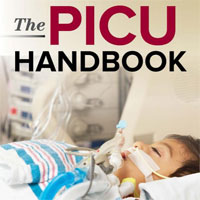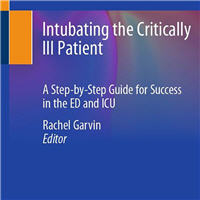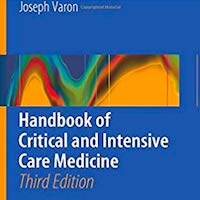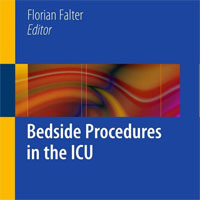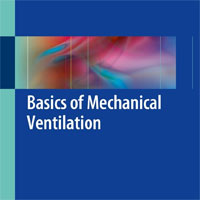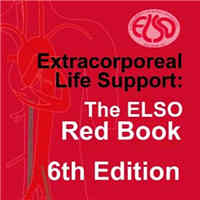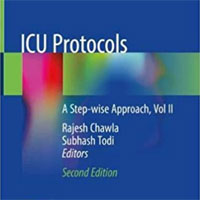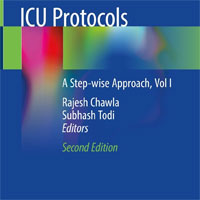Tag: hypotension
Predicting Outcome in Patients with Moderate to Severe TBI Using Electroencephalography
Multifactorial Random Forest models using quantitative electroencephalography (qEEG) features, clinical data, and radiological findings have potential to predict neurological outcome in patients with moderate to severe traumatic... read more
Ethical Considerations About Artificial Intelligence for Prognostication in Intensive Care
New Artificial Intelligence (AI) and machine learning techniques have the potential to improve prognostication in intensive care. However, they require further refinement before they can be introduced into daily practice.... read more
Is Tranexamic Acid Going to CRASH the Management of TBI?
In the recent CRASH-3 randomized trial, early administration of tranexamic acid (TXA) was associated with a non-significant reduction of head injury-related 28-day mortality in patients with isolated traumatic brain injury... read more
Ultrasound-based Clinical Profiles for Predicting the Risk of Intradialytic Hypotension in Critically Ill Patients on Intermittent Dialysis
In critically ill patients on intermittent hemodialysis, the absence of hypervolemia as assessed by lung and vena cava ultrasound predisposes to intradialytic hypotension and suggests alternative techniques of hemodialysis... read more
Preoperative Risk and the Association between Hypotension and Postoperative AKI
Adult patients undergoing noncardiac surgery demonstrate varying associations with distinct levels of hypotension when stratified by preoperative risk factors. Specific levels of absolute hypotension, but not relative... read more
Use of Vasopressor Increases the Risk of Mortality in Traumatic Hemorrhagic Shock
Use of vasopressor for traumatic hemorrhagic shock was associated with mortality after controlling for biases (trauma severity; volume of fluid resuscitation). Among 236,698 trauma patients, 3,551 were included in the... read more
Septic Shock and the Use of Norepinephrine IMCU
Elderly patients with septic shock treated with norepinephrine (NE) displayed a better Intermediate Care Unit (IMCU) survival at the ward and at 30 days than previously expected. Our retrospective chart study did not... read more
Association Between Mean Arterial Pressure and AKI and a Composite of Myocardial Injury and Mortality in Postoperative Critically Ill Patients
Hypotension thresholds that provoke renal injury, myocardial injury, and mortality in critical care patients remain unknown. We primarily sought to determine the relationship between hypotension and a composite of myocardial... read more
Reduced Level of Arousal on Hospital Admission
Reduced level of arousal on hospital admission may be a strong predictor of in-hospital mortality. Most evidence was of low quality. Reduced level of arousal is highly specific to delirium, better formal detection of hypoactive... read more
The association between intravenous fluid resuscitation and mortality in older emergency department patients with suspected infection
Recent studies suggest that hypotension thresholds in current guidelines might be too low for older patients due to arterial stiffening, possibly leading to insufficient fluid resuscitation. We compared intravenous (IV) fluid... read more
Hypotensive Response to IV Acetaminophen in Pediatric Cardiac Patients
In isolation of other medication, a hemodynamic response to IV acetaminophen has a higher prevalence in critically ill children with cardiac disease than previously thought and justifies controlled studies in the perioperative... read more
Effect of High-dose Ascorbic Acid on Vasopressor’s Requirement in Septic Shock
In this study, administration of high-dose ascorbic acid significantly decreased the requirement for vasopressor's dose and duration in surgical critically ill patients with septic shock. Several mechanisms including anti-oxidant,... read more
Incidence, Severity, and Detection of Blood Pressure Perturbations after Abdominal Surgery
Intraoperative and postoperative hypotension are associated with myocardial and kidney injury and 30-day mortality. Intraoperative blood pressure is measured frequently, but blood pressure on surgical wards is usually measured... read more
Management of Refractory Vasodilatory Shock
Refractory shock is a lethal manifestation of cardiovascular failure defined by an inadequate hemodynamic response to high doses of vasopressor medications. Approximately 7% of critically ill patients will develop refractory... read more
Vasopressors in Sepsis in 2050
Vasopressors are used in sepsis when hypotension is assumed to be mainly due to a decreased arterial tone. However, the appropriate time to initiate vasopressors is not clearly defined, and fluid administration is most... read more
Personalization of Arterial Pressure in the Perioperative Period
This review aims to discuss recent findings on the relationship between intraoperative arterial hypotension and organ dysfunction in surgical patients and examines the available evidence for personalizing blood pressure (BP)... read more
Expanding the Differential for Hypotension in the Pediatric Patient
As many ED practitioners are aware, food allergies are common in the first 2 years of life, with a prevalence cited between 1-10% of the population. Most food allergies are IgE-mediated hypersensitivity reactions. Food protein-induced... read more
Tranexamic Acid For Isolated Penetrating Head Trauma
An aeromedical crew was dispatched to a local emergency department to transport a fourteen year-old female with self-inflicted gunshot wound to the head to a tertiary pediatric trauma hospital. The patient was previously... read more
Echocardiography and Lung Ultrasonography for the Assessment and Management of AHF
Echocardiography is increasingly recommended for the diagnosis and assessment of patients with severe cardiac disease, including acute heart failure (AHF). Echocardiography and LUS can assist in the rapid assessment of patients... read more
The Shocked Intubation: Definitive Airway Sans Hypotension
Not many aspects of Emergency Medicine define our specialty better than resuscitation, and few concepts exemplify resuscitation better than shock and intubation. Yet few words together strike greater fear in the minds of... read more
Postoperative Renal Dysfunction After Noncardiac Surgery
Acute kidney injury (AKI) is a frequent postoperative complication with a substantial risk for both short and long-term adverse events, and its incidence is likely to rise because of increasing major surgical procedures.... read more
Effect of Early Sustained Prophylactic Hypothermia on Neurologic Outcomes Among Patients With Severe TBI
Among patients with severe traumatic brain injury (TBI), early prophylactic hypothermia compared with normothermia did not improve neurologic outcomes at 6 months. These findings do not support the use of early prophylactic... read more


